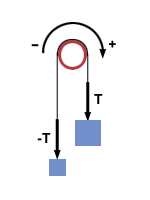Please wait while we process your payment
If you don't see it, please check your spam folder. Sometimes it can end up there.
If you don't see it, please check your spam folder. Sometimes it can end up there.
Please wait while we process your payment

By signing up you agree to our terms and privacy policy.
Don’t have an account? Subscribe now
Create Your Account
Sign up for your FREE 7-day trial
By signing up you agree to our terms and privacy policy.
Already have an account? Log in
Your Email
Choose Your Plan
Individual
Group Discount
Save over 50% with a SparkNotes PLUS Annual Plan!
 payment page
payment page
Purchasing SparkNotes PLUS for a group?
Get Annual Plans at a discount when you buy 2 or more!
Price
$24.99 $18.74 /subscription + tax
Subtotal $37.48 + tax
Save 25% on 2-49 accounts
Save 30% on 50-99 accounts
Want 100 or more? Contact us for a customized plan.
 payment page
payment page
Your Plan
Payment Details
Payment Summary
SparkNotes Plus
You'll be billed after your free trial ends.
7-Day Free Trial
Not Applicable
Renews July 19, 2025 July 12, 2025
Discounts (applied to next billing)
DUE NOW
US $0.00
SNPLUSROCKS20 | 20% Discount
This is not a valid promo code.
Discount Code (one code per order)
SparkNotes PLUS Annual Plan - Group Discount
Qty: 00
SparkNotes Plus subscription is $4.99/month or $24.99/year as selected above. The free trial period is the first 7 days of your subscription. TO CANCEL YOUR SUBSCRIPTION AND AVOID BEING CHARGED, YOU MUST CANCEL BEFORE THE END OF THE FREE TRIAL PERIOD. You may cancel your subscription on your Subscription and Billing page or contact Customer Support at custserv@bn.com. Your subscription will continue automatically once the free trial period is over. Free trial is available to new customers only.
Choose Your Plan
This site is protected by reCAPTCHA and the Google Privacy Policy and Terms of Service apply.
For the next 7 days, you'll have access to awesome PLUS stuff like AP English test prep, No Fear Shakespeare translations and audio, a note-taking tool, personalized dashboard, & much more!
You’ve successfully purchased a group discount. Your group members can use the joining link below to redeem their group membership. You'll also receive an email with the link.
Members will be prompted to log in or create an account to redeem their group membership.
Thanks for creating a SparkNotes account! Continue to start your free trial.
We're sorry, we could not create your account. SparkNotes PLUS is not available in your country. See what countries we’re in.
There was an error creating your account. Please check your payment details and try again.
Please wait while we process your payment

Your PLUS subscription has expired
Please wait while we process your payment
Please wait while we process your payment

Tension Force
The final common application of Newton's Laws deals with tension. Tension usually arises in the use of ropes or cables to transmit a force. Consider a block being pulled by a rope. The person doing the pulling at one end of the rope is not in contact with the block, and cannot exert a direct force on the block. Rather a force is exerted on the rope, which transmits that force to the block. The force experienced by the block from the rope is called the tension force.
Almost all situations you will be presented with in classical mechanics deal with massless ropes or cables. If a rope is massless, it perfectly transmits the force from one end to the other: if a man pulls on a massless rope with a force of 10 N the block will also experience a force of 10 N. An important property of massless ropes is that the total force on the rope must be zero at all times. To prove this, we go back to Newton's Second Law. If a net force acts upon a massless rope, it would cause infinite acceleration, as a = F/m, and the mass of a massless rope is 0. Such a situation is physically impossible and, consequently, a massless rope can never experience a net force. Thus all massless ropes always experience two equal and opposite tension forces. In the case of a man pulling a block with a rope, the rope experiences a tension in one direction from the pull of the man, and a tension in the other direction from the reactive force of the block:

The dynamics of a single rope used to transmit force is clearly quite
simple: the rope just transmits an applied force. When pulleys are
used in addition to ropes, however, more complicated situations can
arise. In a dynamical sense, pulleys simply act to change the
direction of the rope; they do not change the magnitude of the
forces on the rope. Just as we assumed the ropes to be massless, we
will similarly assume that the pulleys we work with are massless and
frictionless, unless told otherwise. The simplest case involving a
pulley involves a block being lifted by another block connected to a
rope:

Please wait while we process your payment

